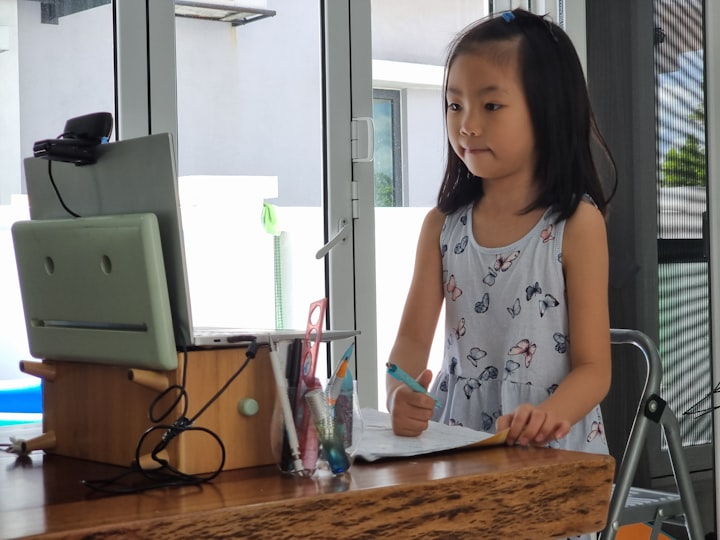The Virtual Nexus: An Unlikely Bond
The Journey of Virtual Nexus and the Heart of Innovation
In the heart of bustling New York City, where skyscrapers touch the clouds and life moves at an electrifying pace, an unexpected trend was quietly taking root. The world of virtual reality had become the latest cultural phenomenon, captivating the hearts and minds of people across the United States.
Meet Alex Thompson, a young software developer with a passion for pushing the boundaries of technology. With the arrival of advanced virtual reality headsets, he saw an opportunity to create a new form of human connection in an increasingly digital world. He envisioned a platform that would transcend distance, allowing people to interact and forge relationships as if they were physically present.
Virtual Nexus, as Alex named his creation, became an instant sensation. The platform offered an array of immersive experiences, from exploring breathtaking landscapes to engaging in intense multiplayer games. However, what set it apart was its unique emphasis on social interaction. Users could create avatars that mirrored their real selves and engage in conversations and activities with others in a simulated environment.
As Virtual Nexus gained traction, it also caught the attention of Lisa Miller, a journalist intrigued by the societal implications of this digital revolution. She embarked on a journey to understand how the virtual world was shaping human interactions and relationships, starting with an in-depth profile on Alex.
Lisa's interview with Alex revealed the deeper motivation behind his creation. He spoke passionately about how modern technology had, paradoxically, led to increased loneliness and isolation. He saw Virtual Nexus as a remedy, a way to bridge the gap between the physical and digital realms and foster genuine connections.
Lisa's article resonated deeply with readers across the country. It sparked conversations about the evolving nature of human relationships in the digital age. People began to explore Virtual Nexus not just for its entertainment value but as a means to connect with loved ones, make new friends, and even attend events without leaving the comfort of their homes.
One of the most heart-touching stories that emerged from Virtual Nexus was that of Emma and Max. They were two individuals from different corners of the country, each facing their own personal challenges. Emma, a talented artist, had been confined to her apartment due to a chronic illness. Max, a war veteran dealing with post-traumatic stress disorder, found it difficult to engage with the outside world.
Through Virtual Nexus, Emma and Max's avatars met in a serene virtual park, where they could simply sit and talk. Their conversations flowed naturally, unburdened by the constraints of their physical circumstances. As weeks turned into months, their bond deepened. They explored fantastical virtual worlds together, shared stories, and provided each other with a support system that transcended their screens.
News of Emma and Max's heartwarming connection spread like wildfire. Their story touched a chord with people struggling with their own isolation and challenges. Suddenly, Virtual Nexus was more than just a trend; it was a lifeline for those who sought companionship, empathy, and a renewed sense of belonging.
As the popularity of Virtual Nexus grew, so did its impact on various sectors. Therapists began using the platform to conduct virtual sessions, offering a safe space for individuals to explore their emotions and seek help. Artists hosted immersive galleries where visitors could appreciate art from around the world without leaving their homes. Even educators embraced the platform, creating interactive lessons that brought history, science, and culture to life.
In the midst of this digital renaissance, Lisa Miller's follow-up article explored the challenges of blurring the lines between the real and virtual worlds. She questioned whether the profound connections formed within Virtual Nexus could ever replace the nuanced dynamics of physical interaction.
Alex, too, grappled with these questions. Despite the success of his creation, he understood that Virtual Nexus was only a tool – a bridge that facilitated connections but could not replicate the subtleties of in-person human contact. He began working on projects that combined the best of both worlds, integrating virtual experiences with tangible elements to create a more holistic form of connection.
The story of Virtual Nexus had become emblematic of the changing nature of human interaction. It highlighted the power of technology to forge bonds across distance and circumstance while raising important questions about the essence of human connection.
As the years rolled on, Virtual Nexus continued to evolve. It remained a cornerstone of modern communication, a testament to the ever-changing landscape of trends in the United States. But beyond the technology and the headlines, it stood as a reminder that even in a world driven by innovation, the true heart of human connection was irreplaceable, no matter the medium.
The ongoing evolution of Virtual Nexus gave rise to a new era of creativity and collaboration. Its impact expanded beyond personal connections, catalyzing innovations that transformed industries and redefined entertainment, education, and even medicine.
Emma and Max's story continued to inspire countless others. In the midst of their virtual adventures, they began organizing virtual support groups for individuals dealing with chronic illnesses and mental health challenges. These safe spaces provided solace and camaraderie for those who often felt isolated by their conditions.
One day, Emma and Max received an invitation to speak at a national technology conference. Their poignant account of finding solace and friendship within Virtual Nexus resonated deeply with the audience, spurring discussions about the ethical responsibilities of tech creators and the potential of VR to address societal issues.
Lisa Miller, who had followed the journey of Virtual Nexus since its inception, chronicled Emma and Max's impact in a follow-up article. She explored the platform's transformation from a mere trend to a catalyst for meaningful change. While acknowledging its potential drawbacks, Lisa underscored that Virtual Nexus had shifted the narrative surrounding technology, from being solely a source of disconnection to becoming a conduit for empathy and understanding.
As the years progressed, a surprising trend emerged within Virtual Nexus – charitable initiatives that spanned the digital and physical realms. Virtual fundraisers were organized to support causes ranging from environmental conservation to healthcare access. Participants donned avatars and embarked on virtual walks, runs, and cycling events, with real-world sponsorships benefiting nonprofits.
Meanwhile, Alex Thompson's pursuit of bridging the gap between the virtual and the physical yielded groundbreaking results. He spearheaded projects that seamlessly integrated Virtual Nexus experiences with tangible elements. For instance, a virtual cooking class might include a physical kit of ingredients delivered to participants' homes, allowing them to cook alongside their avatars.
These projects received widespread acclaim for their innovative approach to blending the best of both worlds. Alex's efforts were recognized not just for pushing technological boundaries but for retaining the essence of human connection in an increasingly digitized landscape.
The success of Virtual Nexus led to a global movement of tech developers and creators striving to harness technology's potential for positive change. The tech industry began to embrace a newfound sense of responsibility, prioritizing ethical considerations and focusing on innovations that enhanced human experiences rather than merely generating profits.
Even as technology advanced, the importance of physical presence remained at the forefront of conversations. Virtual Nexus became a reminder that while technology could enable powerful connections, it was the authenticity, vulnerability, and emotional depth that truly defined human relationships.
The story of Virtual Nexus continued to evolve, a testament to the ongoing dialogue between the virtual and the real. Its impact was not limited to the United States; its ripples were felt worldwide. From virtual reality art exhibitions that showcased global talents to international collaborations on climate change initiatives, Virtual Nexus served as a beacon of unity and innovation in an interconnected world.
As the years flowed by, Alex Thompson, Lisa Miller, Emma, and Max found themselves at the forefront of a new era – one where technology's potential was harnessed for the greater good. The virtual landscape they had helped shape was not just a trend; it had become a dynamic force for positive change, forging a path towards a future that celebrated the delicate balance between the digital and the human.
And so, in the heart of an ever-evolving world, the story of the Virtual Nexus remained a testament to the power of innovation, the resilience of human connection, and the undeniable potential of technology to inspire profound transformation.
About the Creator
Md Aminur Rashid Khan
"Journey with me through tales that stir souls. I am Md Aminur Rashid - Your guide to emotions, adventures, and the heart's uncharted territories. 📚✍️ #Storyteller"







Comments
There are no comments for this story
Be the first to respond and start the conversation.